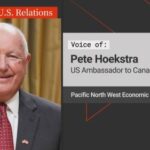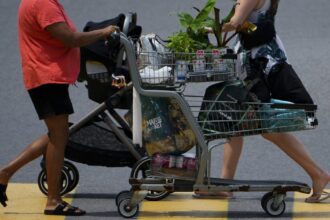In the darkness of a November night, what began as a casual gathering at a Toronto pub spiraled into a scene of chaos and bloodshed that has now been traced back to the city’s notoriously violent tow truck industry wars. The recent mass shooting at the Spice Island Restaurant and Bar, which left one person dead and four others wounded, appears to be the latest bloody chapter in Toronto’s underground towing conflicts, according to multiple sources close to the investigation.
Investigators are piecing together evidence suggesting the gunfire was orchestrated by a group of young men who have become the industry’s hired enforcers—individuals barely out of their teens who carry out violent acts on behalf of towing operators vying for territorial control of Toronto’s lucrative accident scenes.
“What we’re seeing is deeply concerning,” said Detective Sergeant Marcus Reynolds, who spoke on condition of partial anonymity due to the ongoing investigation. “These aren’t experienced criminal organizations in the traditional sense. These are young men, some barely 20 years old, wielding firearms with shocking casualness in public spaces.”
The Toronto towing industry has been embroiled in violence for years, with competing operators fighting for control of the city’s most accident-prone routes. Police intelligence suggests that a single collision scene can generate between $2,000 and $5,000 in revenue through towing fees, storage costs, and kickbacks from repair shops and insurance claims.
Court documents recently unsealed reveal that 26-year-old Jabril Hassan, the man killed in the shooting, had connections to one of the towing networks operating in Toronto’s western districts. The four other victims, whose identities remain protected, are believed to have been targeted specifically rather than random casualties.
“This wasn’t indiscriminate violence,” explained criminologist Dr. Eleanor Langford from the University of Toronto. “The pattern suggests a calculated hit designed to eliminate competition and send a message. What makes this particularly troubling is how these young shooters are being groomed and deployed by more established figures who remain insulated from the violence they orchestrate.”
The tow truck wars represents an alarming evolution in the tow truck wars. Previously, violence typically involved direct confrontations between rival operators—damaged trucks, slashed tires, or targeted assaults. The escalation to public shootings in crowded venues marks a dangerous new phase that puts innocent bystanders at heightened risk.
Financial records obtained during recent raids suggest some towing operators are generating millions in revenue annually through their control of accident scenes. This immense profitability has attracted organized crime elements that provide weapons, training, and direction to the young gunmen while maintaining separation from the actual violence.
“We’re seeing a dangerous pipeline where vulnerable youth from underserved communities are being recruited, armed, and deployed in these turf wars,” said community advocate Jerome Williams, who works with at-risk youth in Toronto. “The promise of quick money and status is powerful when legitimate opportunities seem out of reach.”
The Toronto Police Service has established a specialized task force focused on disrupting the tow truck violence, but investigators acknowledge the challenges in penetrating these networks and securing witness cooperation. Many potential witnesses fear retaliation, while others remain loyal to the financial opportunities the industry provides.
Provincial authorities have implemented new regulations requiring tow truck operators to be licensed and limiting which operators can respond to accident scenes in specific areas. However, enforcement remains challenging, and the lucrative nature of the industry continues to fuel violent competition.
As the investigation continues into the pub shooting, residents of Toronto are left wondering: in a city proud of its safety record, how has a service as seemingly mundane as towing vehicles sparked a violent underground war that now threatens public spaces and innocent lives?

























